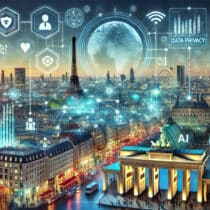Henry Ford and the Faster Horse
The change that is needed starts with what we call the ‘business side’ of the organization, the users of IT. Traditionally, we tend to ask what their needs or requirements are. The answer you get is often, as Henry Ford once said, the need for a faster horse. Many needs described in this way can be summarized as: better functioning of the analog world of 20 years ago instead of the future world. This limited thinking is not only the domain of business representatives but also forms the basis of much legislation and regulation. To break through that, it is necessary to stop thinking in terms of needs, requirements, and business translated into solutions by IT. The people with insight into developments in the digital world must be put at the helm of the organization.
This is a radical change for many organizations. Banks and insurers have largely taken this step, but they still generally have a CEO with limited knowledge of the digital world. This also applies to the CFO, CCO, and CMO. Today’s winners, on the other hand, have people in all layers who know how to optimally use the digital domain in their primary process. Among them are people who feed colleagues in the rest of the organization with new ideas, challenge them, and – if they are not careful – pass them by and become the future boss.
This does not mean that there should be no attention and knowledge for work processes, employees, customers, and suppliers. Digitalization requires more attention for this than ever. Work processes must be efficient but also challenging and provide sufficient room for employee development. New is the attention to compliance, ethics, accessibility, and adaptability: issues that require knowledge of people and where IT and technology can play a supporting role.
Automation: Complaints and Whistleblowers
Companies that are only focused on efficiency and see employees as the necessary function that cannot be automated will have an increasingly difficult time. Employees file complaints, become whistleblowers, or choose another employer. Amazon is a good example, still a winner, but people are massively rebelling against the almost slavery-like employment. They try to form unions, devise ways to file anonymous complaints, and leak videos showing how little time and space they have for personal development by showing how many packages they have to collect. A case like Amazon shows that being truly successful requires more than just smart automation.
Successful digitalization requires precisely an eye for the human dimension. In many traditional companies, this is difficult because how do you involve people in something they have no knowledge of? Banks have cleverly responded to this. They massively laid off people in IT management functions and rehired them by return post on the user side, in new roles and functions. With this knowledge boost, banks have elevated many employees from classical functions to a higher level. By now, almost sixty percent of the workforce at many banks consists of people we previously considered IT professionals.
Software as a Service
Over the past ten years, we have started working differently: the pace of innovation has increased and more and more software solutions have emerged where there is little left to choose from. Think of systems for education or healthcare. The disadvantage of such Software as a Service is that the software dictates and external parties are subject to it. Think of software updates or changes over which you have little say as a customer. As a user of such software, you must therefore have more knowledge of these systems in-house, and system administrators must have a lot of knowledge ready to understand the impact of the software used on their organization. The frequency of software updates is also increasing, making it necessary to be extra aware of the impact on your organization or company.
That transformation is not finished, in fact, it will never be finished. The continuous stream of changes and innovations coming at us requires people who continuously question the status quo. That’s where the balance lies: companies must shift their focus from short-term profit to long-term value. They must find a balance between social and shareholder returns. In practice, this often proves difficult.
Trends – Ten Years Ago
 Social context
Social context




